Recent Articles
Popular Makes
Body Types
10 Cars with Automatic Emergency Braking Systems
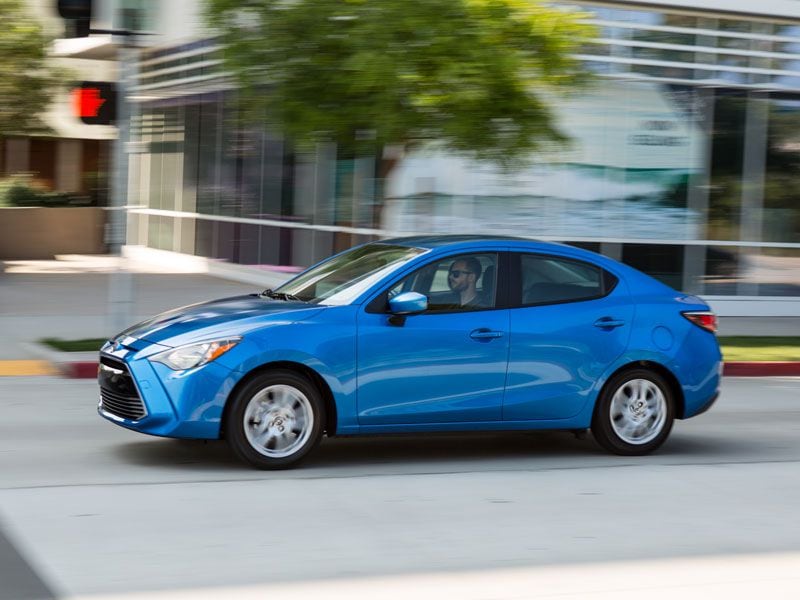
2016 Scion iA ・ Photo by Scion
Cars with automatic emergency braking are taking the functionality found in forward collision warning systems to its logical conclusion: Not only can these combined systems detect a potential crash situation ahead of the driver’s vehicle, they also can—as the name suggests—automatically slow down or stop that vehicle if the pilot doesn’t do so quickly enough. This kind of technology isn’t meant to replace careful driving, but it does act as a worthwhile backup plan and it is increasingly affordable. Thus, today’s top 10 list is limited to mainstream, affordable vehicles alone, without mention of any of the many premium choices that offer an automatic emergency braking system.
2016 Chevrolet Malibu
The Bowtie brand pulled out all the stops for the 2016 Chevrolet Malibu, and that includes furnishing the all-new mid-size with some sophisticated stopping systems. For example, the available Front Pedestrian Alert technology can warn drivers of folks crossing in front of the car and, in some cases, engage the brakes to bring the vehicle to a full halt. At higher speeds, the adaptive cruise control also integrates front automatic braking to help maintain a pre-set distance between the Malibu and the car ahead of it. But like many cars with automatic emergency braking, this next-gen sedan showcases even more driver assistance measures, including a rearview camera, lane-keeping assistance, lane departure warning, side blind zone alert with lane change alert, rear cross-traffic alert, automatic high beams and parking assistance. All of that is offered on the new Malibu Hybrid, too, along with EPA ratings of 46 mpg city/47 mpg highway/46 mpg combined.
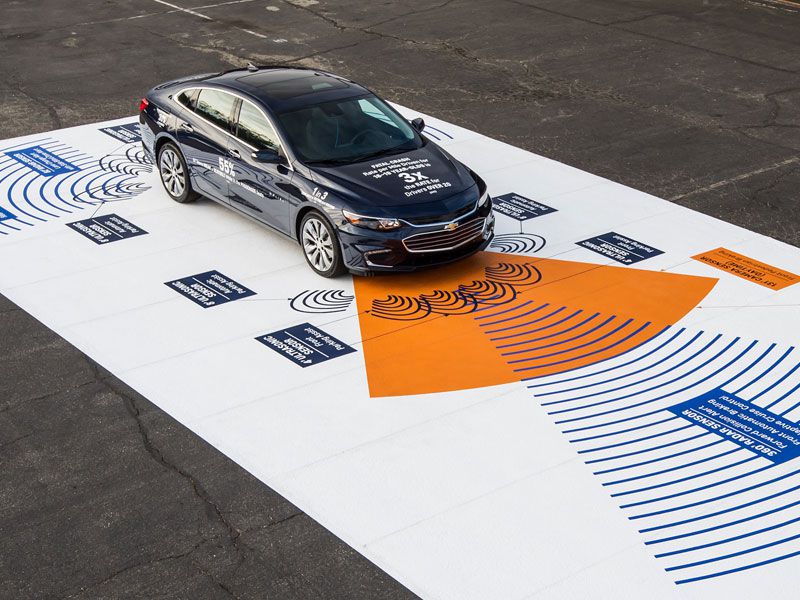
2016 Chrysler 300
The 2016 Chrysler 300 full-size sedan counts Full-speed Forward Collision Warning-Plus as part of its occupant-protection shield, along with the brand’s Adaptive Cruise Control-Plus with Full Stop, so that the car’s brakes can automatically deploy in both traditional and cruise-controlled driving scenarios. The 300 also checks the boxes for many of the industry’s other common safety technologies—from a blind spot monitor to lane-keeping and lane departure systems—but while providing a highly uncommon rear-wheel drive powertrain. Indeed, the 300 and its corporate cousin, the Dodge Charger, are the only two mainstream cars with automatic emergency braking and a RWD configuration. And a 5.7-liter, 363-horsepower Hemi V8. And a Torqueflite eight-speed automatic transmission. And an all-wheel drive setup that can disengage the front axle for higher efficiency driving in dry weather. And best-in-class highway and combined V6 fuel economy. And both Beats Audio and a Harman Kardon 19-speaker sound system.
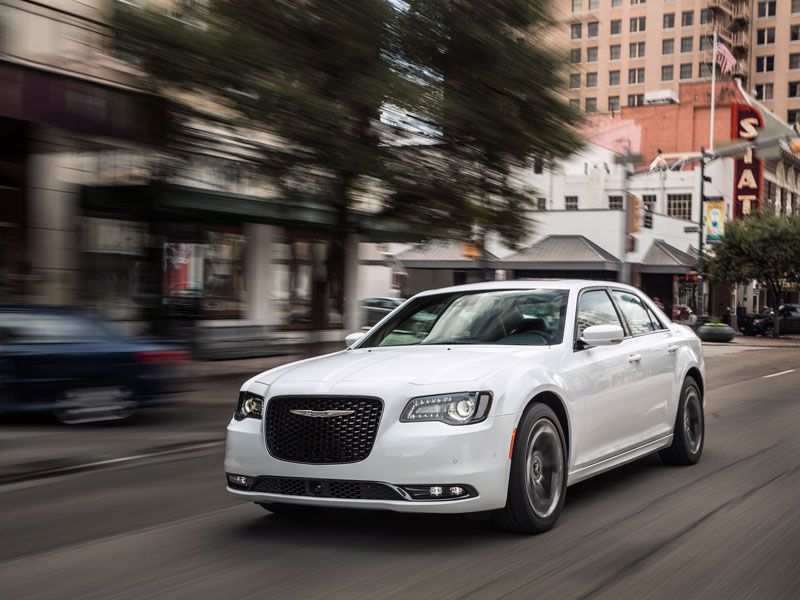
2016 Honda Civic
One of a growing number of compact cars with automatic emergency braking, the 2016 Honda Civic actually supplies that safety feature in two different body styles, so far: It’s part of the Honda Sensing suite of safety measures that’s available for both the Civic sedan, previously picked as the 2016 North American Car of the Year, and the recently introduced Civic coupe. Needless to say, when the new Civic hatchback goes on sale later this year, it’s likely to offer similar safety benefits, as well. That means a broader range of customers can enjoy the broad range of Honda Sensing driver assistance technologies, which include collision mitigation braking, lane departure warning, forward collision warning, adaptive cruise control, road departure mitigation and more. A multi-angle rearview camera and expanded-view driver’s-side mirror also are standard on the Civic, and although they’re great for driver visibility, customers should remember that so is the car’s dramatic new exterior design.
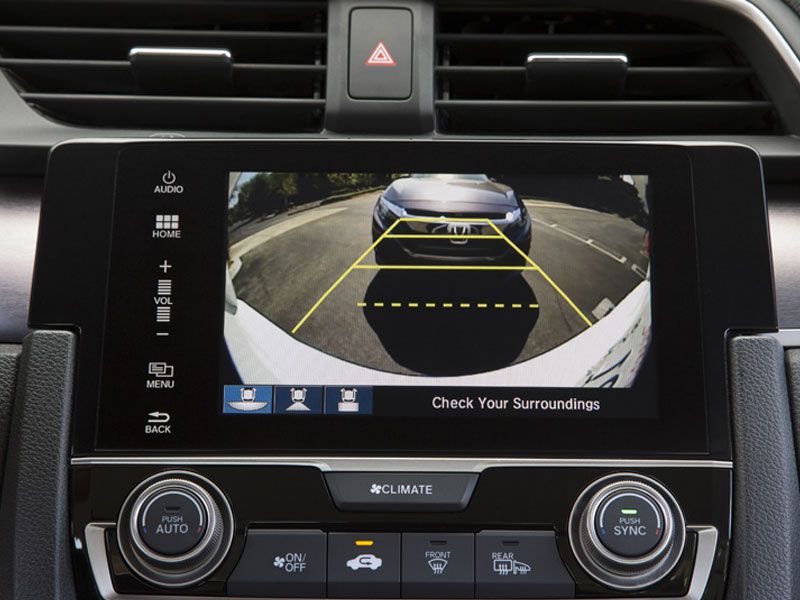
Photo by Honda
2016 Scion iA
Out of all the cars with automatic emergency braking that are currently on the market, only one is a subcompact sedan—the Scion iA. Further, because the iA also scored “good” grades in the IIHS crashworthiness testing, the car is the only one in its segment to earn a Top Safety Pick+ recognition from the IIHS. Yet perhaps what’s most impressive about the iA’s low-speed pre-collision system is that it doesn’t require a high price. In fact, it’s standard on the iA despite the car’s affordable MSRP of $17,595. That kind of value has long been a hallmark of the Scion brand, of course, and it continues with also-standard iA amenities such as a six-speaker media system with a 7-inch touchscreen display, voice recognition, Bluetooth connectivity, two USB ports, and interfaces for Pandora, Aha and Stitcher Internet-based audio resources. Even starting the car is a premium experience, thanks to standard push-button ignition.
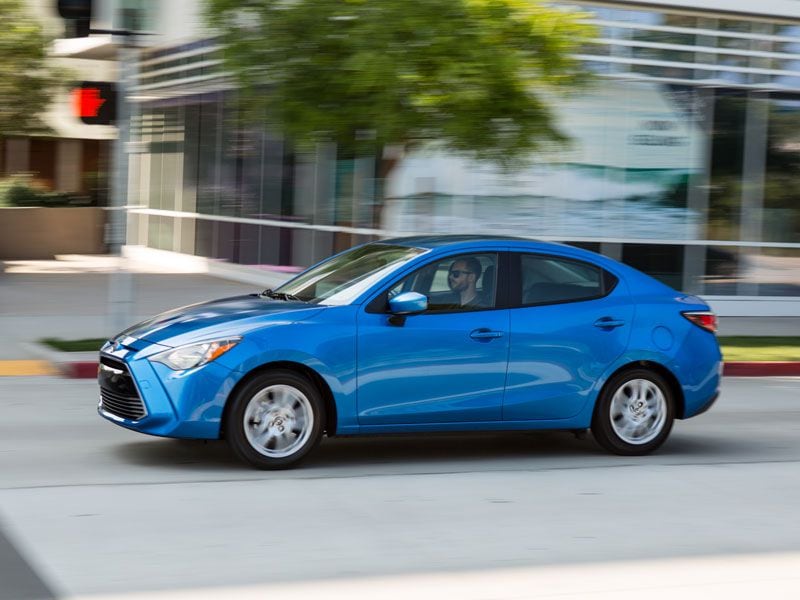
Photo by Scion
2016 Mazda Mazda6
The zoom-zoom brand remains an industry leader in terms of driving dynamics, but it’s beginning to develop an equally strong reputation for high-tech occupant-safety systems. Consider the 2016 Mazda Mazda6, which is highlighted by a front crash prevention system that received the highest possible grade from the IIHS. The technology can be effective in low-, mid- and high-speed travel conditions, with Mazda complementing the system with the expected blind spot monitor, rear cross traffic alert, lane departure warning, rear vision camera, etc., etc. Nor is fuel economy an afterthought with Mazda. Yes, it’s a midsize sedan, but it’s also one of the market’s most efficient cars with emergency braking—backed by an entirely separate stopping innovation. The i-ELOOP regenerative braking system captures energy usually lost to heat, converts it into electricity, and boosts the car’s EPA line to 28/40/32. Mazda6 motivation then comes from a 2.5-liter engine that’s worth 184 horsepower and 185 lb.-ft. of torque.
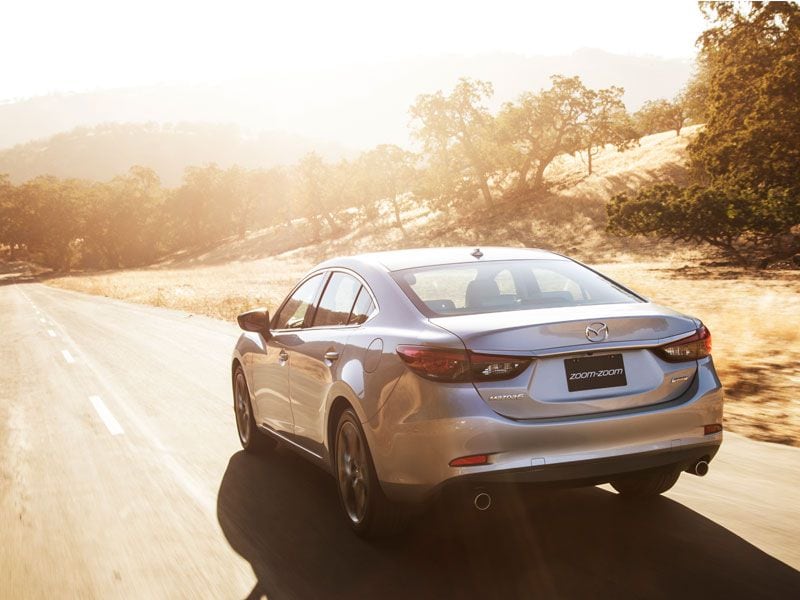
Photo by Mazda
2016 Nissan Sentra
The 2016 Nissan Sentra is positioned as a compact sedan with “class-above” characteristics, and the brand points to the car’s roomy cabin and a redesigned exterior that borrows from the stylish Murano crossover. However, the Sentra’s also in the upper echelon of the segment for safety technology after adding new driver assistance measures for the 2016 model year. Now, as you might guess from its appearance on our list of cars with automatic emergency braking, the Sentra can identify slowed or stopped vehicles on the road ahead and automatically apply the brakes to help avoid or reduce the damage from a collision. Nissan further launches adaptive cruise control, blind spot warning and rear cross-traffic alert for the 2016 Sentra, along with a revised cabin environment that features a high-res LCD instrument panel. Providing a noticeably premium design cue, the flat-panel display relies on the same kind of thin-film transistor (TFT) technology often found at higher price points.

Photo by Nissan
2016 Subaru Impreza
Subaru is another brand that’s dedicated to delivering multiple cars with automatic emergency braking, supplying that technology in its EyeSight driver-assistance package for the 2016 Subaru Impreza compact and the Legacy mid-sizer. The EyeSight setup additionally integrates adaptive cruise control and lane departure warning, and all Impreza models with the package also welcome Subaru’s Steering-Responsive Fog Lights. Developed to better illuminate the road as the Impreza is cornering, these fancy fog lights will—if turned off—automatically light up on the side toward which the vehicle is turning. Subaru safety is opening eyes at the IIHS, too: The 2016 Impreza is a Top Safety Pick+ from the brand, boasting the highest grades given for front crash prevention technology—and for crashworthiness. Enthusiasts also can fit the EyeSight technology to the revved-up Impreza WRX, blending standout safety with a standard 268-horsepower turbocharged engine, all-wheel drive with active torque vectoring, and a six-speed manual transmission.
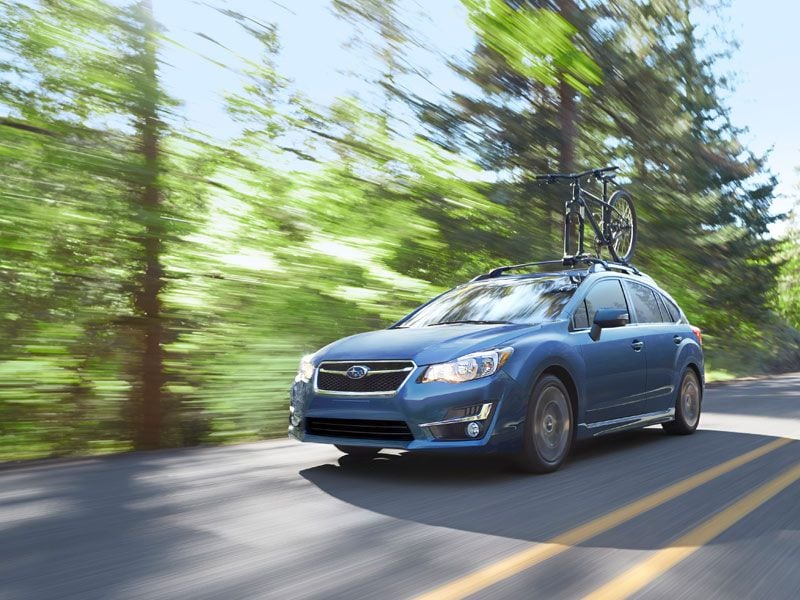
Photo by Subaru
2016 Volkswagen Golf
It seems like a long time ago, but Volkswagen’s compact hatch was voted the North American Car of the Year just last year, and even as the automaker has had to focus its attention elsewhere in recent months, engineers did find time to significantly upgrade the 2016 Volkswagen Golf. As one result, customers will find there’s a new Driver Assistance Package available for the Golf SE and SEL editions, complete with forward collision warning, autonomous emergency braking, adaptive cruise control, lane departure warning, a blind spot monitor, rear cross-traffic alert and an assisted-steering parking system. Shoppers also should be clear: The Golf’s only engine choice is an award-winning one, in the form of a 1.8-liter turbo that blends a peppy 170 horsepower and 199 lb.-ft. of torque with green-tinted fuel-economy ratings of up to 25 mpg city/37 mpg highway/30 mpg combined. That said, the hot hatch GTI has 210 horses and the same safety options.
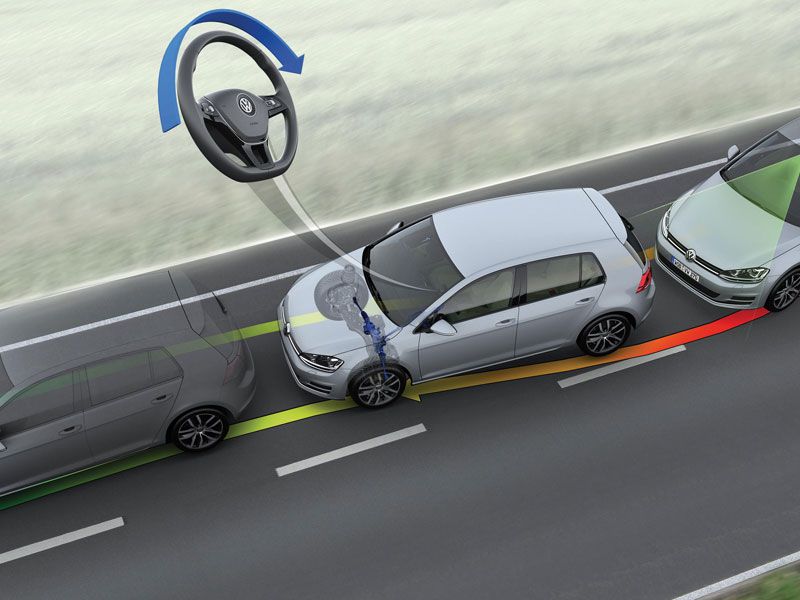
2016 Hyundai Sonata
Autobytel experts are particularly fond of family-oriented cars with automatic emergency braking, since if any vehicles need to provide the full gamut of safety measures, it’s those tasked with toting younger passengers. Take the 2016 Hyundai Sonata. It’s the brand’s mid-size sedan, and in recognition of its role in the marketplace, Hyundai has enhanced the Sonata’s previously available forward collision warning with new-for-2016 automatic stopping capability. Also working in concert with that new feature are returning Sonata safety systems such as lane departure warning, blind spot detection, rear cross-traffic alert, lane change assistance and rear parking assistance. Meanwhile, additional fine-tuning for the new model year brings a 7-inch display audio setup, with Android Auto smartphone integration, to SE models and above; new 17-inch wheels and a Sport edition front fascia for the Limited trim; a heated, flat-bottomed steering wheel for the turbocharged Limited 2.0T; and aluminum suspension components for better handling throughout the lineup.
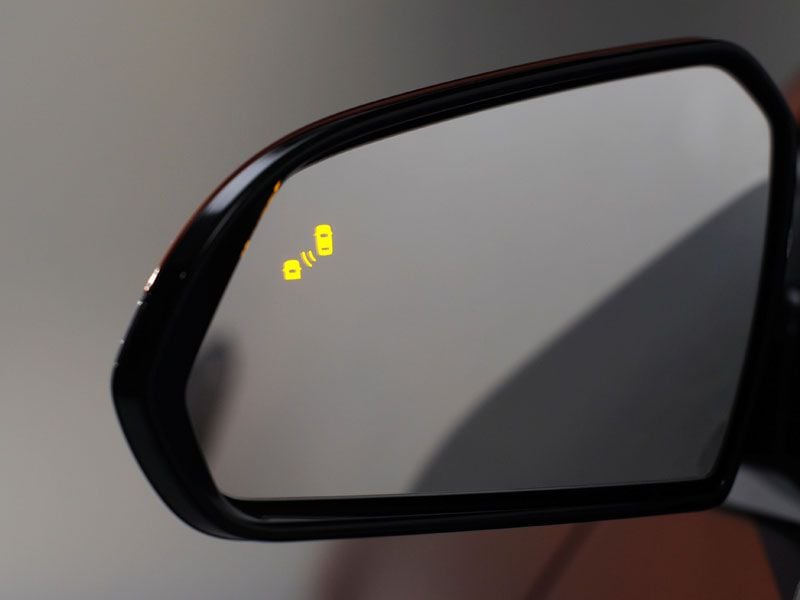
Photo by Hyundai
2016 Ford Mustang
It’s got more than just a mere forward collision warning, if a bit less functionality than some other cars with automatic emergency braking, but the 2016 Ford Mustang deserves mention somewhere for its “brake support” technology. With that on board, the Mustang bolsters multiple warning levels by pre-charging the brakes and boosting their sensitivity. That way, when drivers respond to the car’s alert mechanisms, the stoppers are immediately ready for optimum performance. Also, though the Mustang is better known for optimum performance of a different sort, it does fill out its safety roster with adaptive cruise control, Ford’s Blind Spot Information System with Cross-Traffic Alert, and rain-sensing wipers. The Mustang finally seals the deal as the only modern day muscle car with a 5-Star Safety Score in all three of NHTSA’s rigorous testing procedures, including those for frontal crash protection, side crash protection and rollover roof strength.
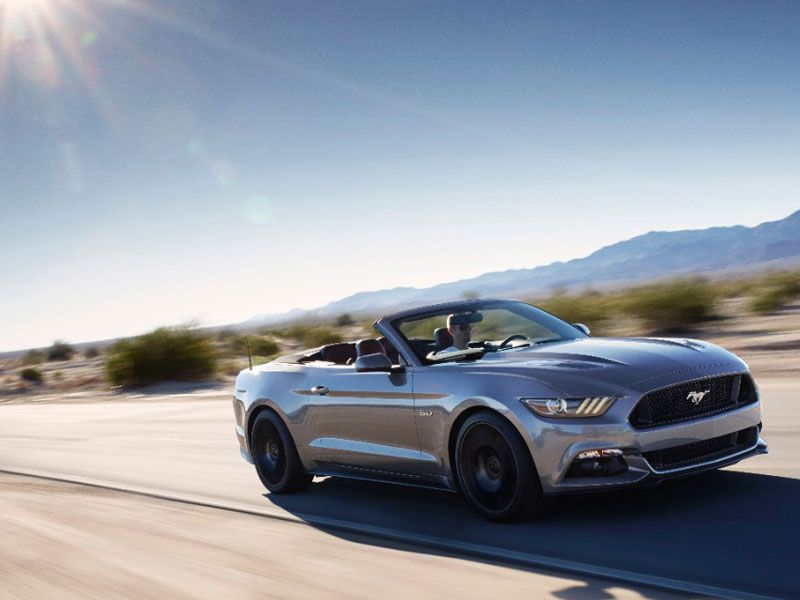
Photo by Ford